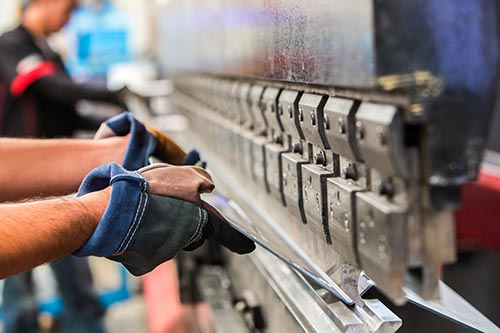What are commonly used sheet metal operations?
Views: 371 Update date: Aug 21,2024
Sheet metal operations involve a variety of processes used to shape and form metal sheets into desired parts or products. Here are some commonly used sheet metal operations:1. Cutting Operations
Shearing: A process where straight cuts are made on the sheet metal using shear force.Laser Cutting: Uses a high-powered laser to cut the metal with precision.
Plasma Cutting: Involves using a plasma torch to cut through electrically conductive materials.
Waterjet Cutting: Uses a high-pressure jet of water, often mixed with an abrasive, to cut the metal.
2. Bending Operations
Air Bending: The metal is bent using a punch and die, with the metal not fully touching the die.Bottoming: The sheet metal is pressed fully into the die to achieve a precise bend angle.
Coining: A precise bending operation where the material is compressed into the die, producing an accurate bend.
Roll Bending: Sheet metal is passed through a series of rollers to form curved parts.
3. Drawing Operations
Deep Drawing: A process used to create deep, hollow shapes by pulling the sheet metal into a die.Shallow Drawing: Similar to deep drawing but used for making shallower parts.

4. Punching Operations
Blanking: A punch is used to cut out a piece of sheet metal to make a blank.Piercing: Creates holes or shapes in the sheet metal by driving a punch through the metal.
Notching: Removes small sections from the edge or interior of the sheet.
5. Forming Operations
Stretch Forming: The sheet metal is stretched over a form block to create large, contoured shapes.Embossing: Creates raised or recessed designs on the sheet metal surface.
Spinning: A lathe-like process where sheet metal is spun and formed into symmetrical shapes.
6. Joining Operations
Welding: Fuses two pieces of metal together using heat, often with a filler material.Riveting: Joins sheets by inserting a rivet through aligned holes in the metal.
Fastening: Uses screws, bolts, or other mechanical fasteners to join metal sheets.
7. Finishing Operations
Deburring: Removes sharp edges or burrs left after cutting operations.Polishing: Improves the surface finish of the metal.
Painting/Coating: Applies a protective or decorative layer to the sheet metal surface.
These operations are integral to the manufacturing of various components across industries, from automotive parts to household appliances.



